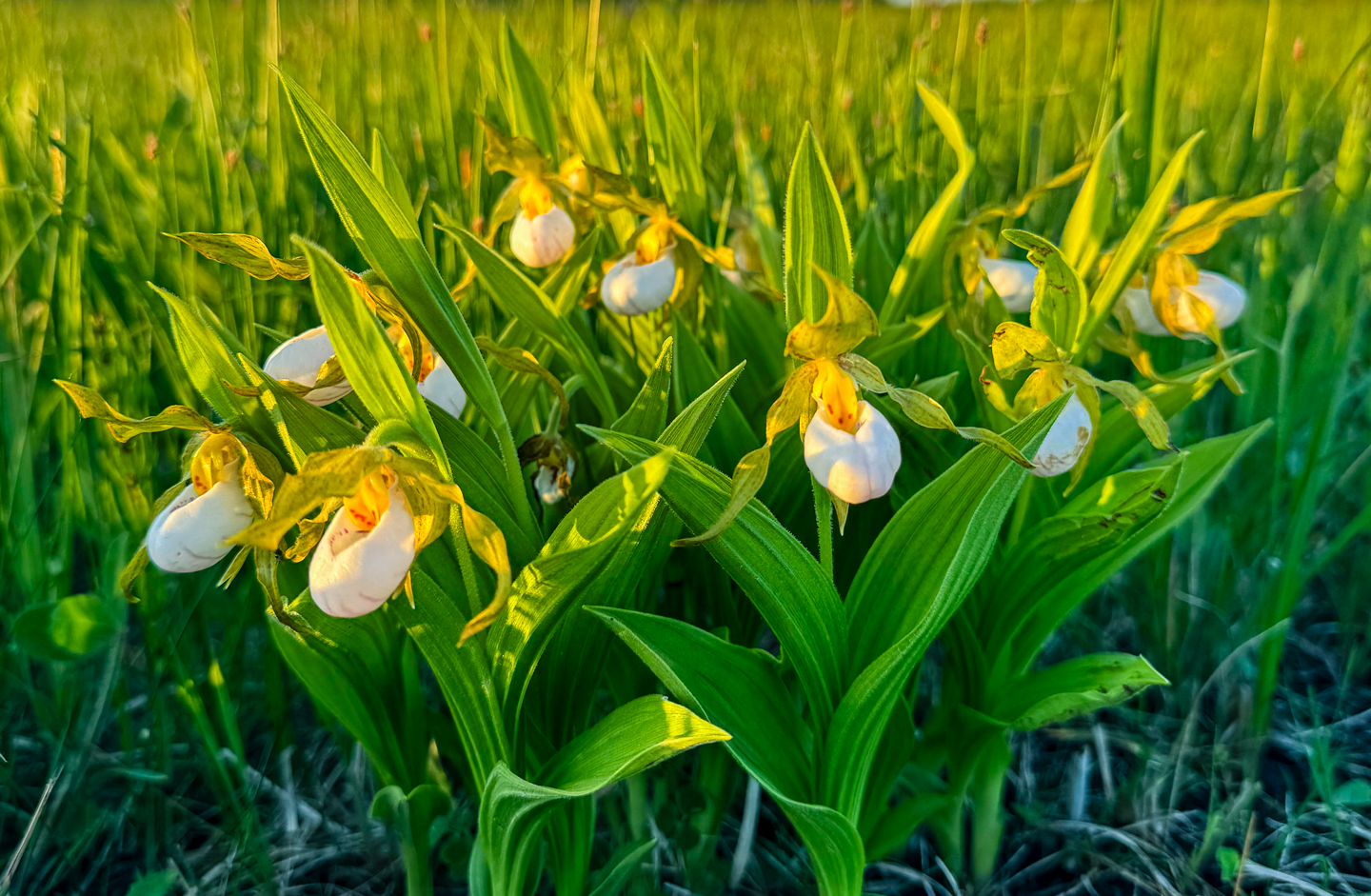
By Ruby Rolland, Environmental Specialist, NGPC
The small white lady’s slipper (Cypripedium candidum), a species of flowering plant, is listed as threatened in Nebraska and can be found in a variety of wet meadows and prairies in the northeastern and central parts of the state.
When thinking about where you might find threatened or endangered species, what usually comes to mind are expanses of untouched prairie, secluded canyon streams or middle-of-nowhere wetlands. Some species, however, have had to make do with less. The small white lady’s slipper, where it has been pushed out of its preferred “untouched prairies,” has settled for soggy road ditches.
Standing around 8 inches tall, the small white lady’s slipper is a hearty species of orchid. With several long green leaves and one stalk tipped with a white slipper-shaped flower, this orchid was traditionally found hidden among other prairie species like equisetum and anemone within wet meadows and prairies — fields of native vegetation where the water table is close to the surface.
However, as agricultural production became more prevalent, these lush, wet fields were preferable for tilling and planting crops and stocking cattle. Consequently, this turning over and trampling of the prairie led to the rapid decline of this orchid.
While patches of pristine habitat still support some populations, many small white lady’s slippers are now found growing alongside asparagus, pop bottles and other prairie species seeking sanctuary. The road ditches where these orchids have settled are sometimes the only good places left for them to grow, offering a small but reliable refuge in a changing landscape.
These road ditches, while safe from cows and plows, do require regular maintenance for the safety of the travelling public. The Nebraska Game and Parks Commission and the Nebraska Department of Transportation work closely together to balance the duties of roadway management with the needs of this rare flower. Sometimes that means adjusting mowing schedules so the plants have time to flower and set seed; other times, it means marking patches to avoid during herbicide applications. This careful coordination is supported by site visits with Game and Parks biologists, spring surveys with conservationists and project reviews with the Department of Transportation’s Environmental Division.
Thanks to the efforts of dozens of dedicated people, this unconventional habitat continues to support one of Nebraska’s rarest flowers.
For more information on Nebraska’s threatened and endangered species, visit OutdoorNebraska.gov.
